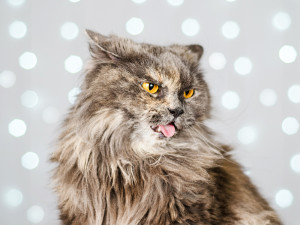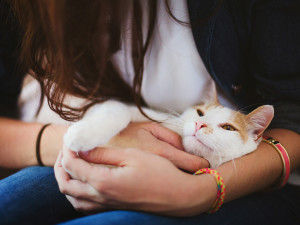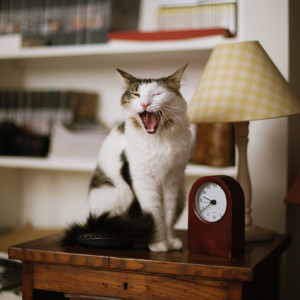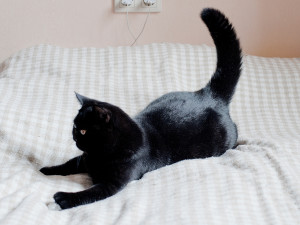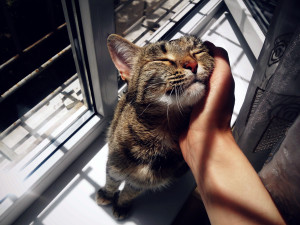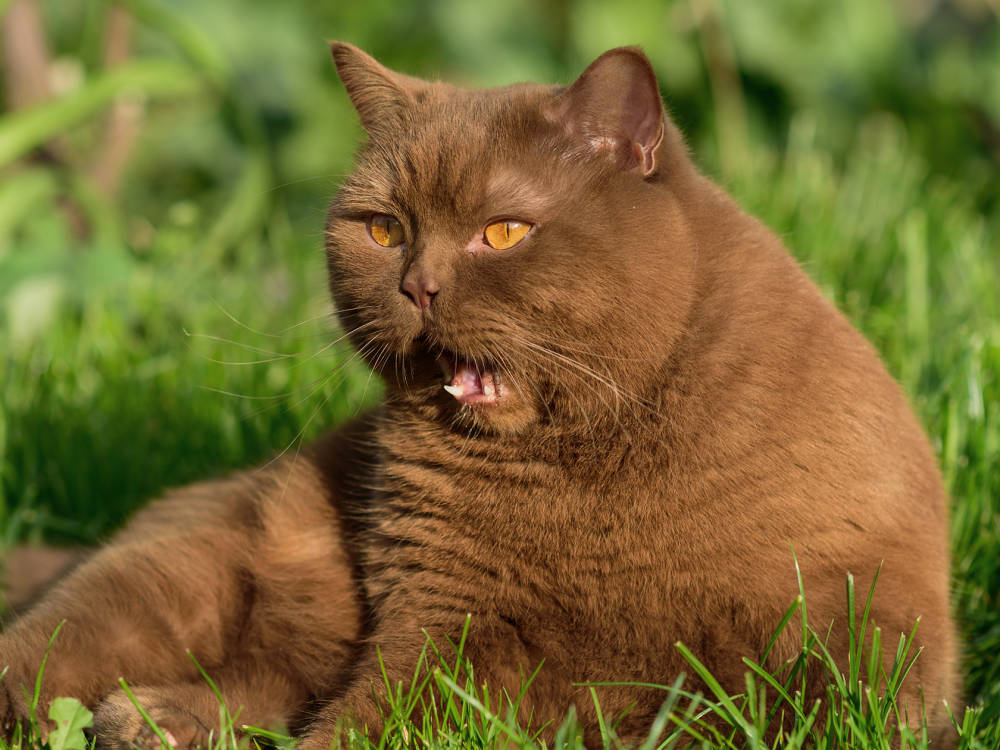
share article
Bezoars, aka hairballs, were once thought to be the antidote to poison, epilepsy and the plague – but please don’t go collecting all of your cat’s to fashion into a charm bracelet.
Before a hairball becomes a hairball, it’s a kind of nauseating trifecta of hair, food and saliva in your cat’s gut – not unlike your snarled, foamy clumps of hair that collect in the shower drain. All cats ingest hair thanks to their methodical grooming routines. Their barbed tongue acts like a brush to remove loose hair and, naturally, they swallow some of it. Most of that hair ends up in the litter box, but sometimes undigested hair mixed with digestive fluids (we’ll spare you the science lesson) gets stuck in your cat’s stomach and metamorphoses into that thing.
“Hair is not all that digestible – it’s going to either go through or come back up,” says Dr Amy Stone, DVM, PhD. Hairballs are a fact of life for most cats (and cat owners). Longhaired breeds like Maine Coons cough up clumps of hair twice as often as their shorthaired cousins. If your cat obsessively overgrooms, they may ingest more hair than they can pass. The result is an Emmy-winning performance of retching, gagging and dry heaving until your cat hawks up a wad of hair on the carpet.
“If hairballs happen once every three or four months throughout your cat’s life, it’s probably not that big of a deal,” says Dr Stone. “Or, a hairball could be the thing that tells you something is wrong.” Most are harmless, but at times, small clumps of hair can cause big problems like intestinal blockages. If your cat stops eating, seems lethargic, or repeatedly tries to vomit without success, they should see a vet. Dehydration can make it harder for a hairball to pass through your cat’s GI tract so IV fluids are often a quick fix. In more serious cases, surgery may be needed to remove an especially ominous hairball.
Dr Stone suggests establishing a regular grooming routine, as brushing your cat can help remove excess hair. But if they are becoming an all-too-common occurrence, a hairball diet – yes, it’s a thing – is high in fibre and therefore more digestible. (Weird fact: a study found that cats that eat dry food that is round more successfully pass hairballs than those that eat triangular-shaped food.) The next time your cat coughs one up, check your gag reflex and toss it in the trash. It will not – we promise – grant you immortality.

Jodi Helmer
Jodi Helmer is a North Carolina-based freelance writer who shares her home with an embarrassing number of rescue dogs and relies on four feral cats to patrol the barn. When she isn’t refilling food and water dishes, Jodi writes about animals for Scientific American, Sierra, WebMD, AKC Family Dog, Living the Country Life, and Out Here.
Related articles
![white and brown cat being brushed]() opens in a new tab
opens in a new tab6 Cat Grooming Tools
Give them the day off from self-grooming
![Cat enjoying laying on girl's legs and being cuddled]() opens in a new tab
opens in a new tabClaws Out: How to Trim Your Cat’s Nails
Expert tips and the best tools for getting the job done without a scratch
![White-and-brown cat sitting on a side table by a lamp with their mouth open, gagging]() opens in a new tab
opens in a new tabYour Cat Is Gagging. Should You Panic?
It’s not always an emergency – but it could be
![black cat doing zoomies on a bed]() opens in a new tab
opens in a new tabYour Cat’s Erratic Zoomies – Explained
Fast, furious and officially normal – according to a cat behaviourist
![Cat being happily pet in the sunshine of a window]() opens in a new tab
opens in a new tabHow to Stroke a Cat (Without a Scratch)
There is a right and wrong way
![A white cat in a meadow with flowers and tall grass.]() opens in a new tab
opens in a new tabFlea and Tick Preventatives and Treatments For Cats
From collars to topicals to chews, here are the flea and tick preventatives we’re giving our cats this summer
